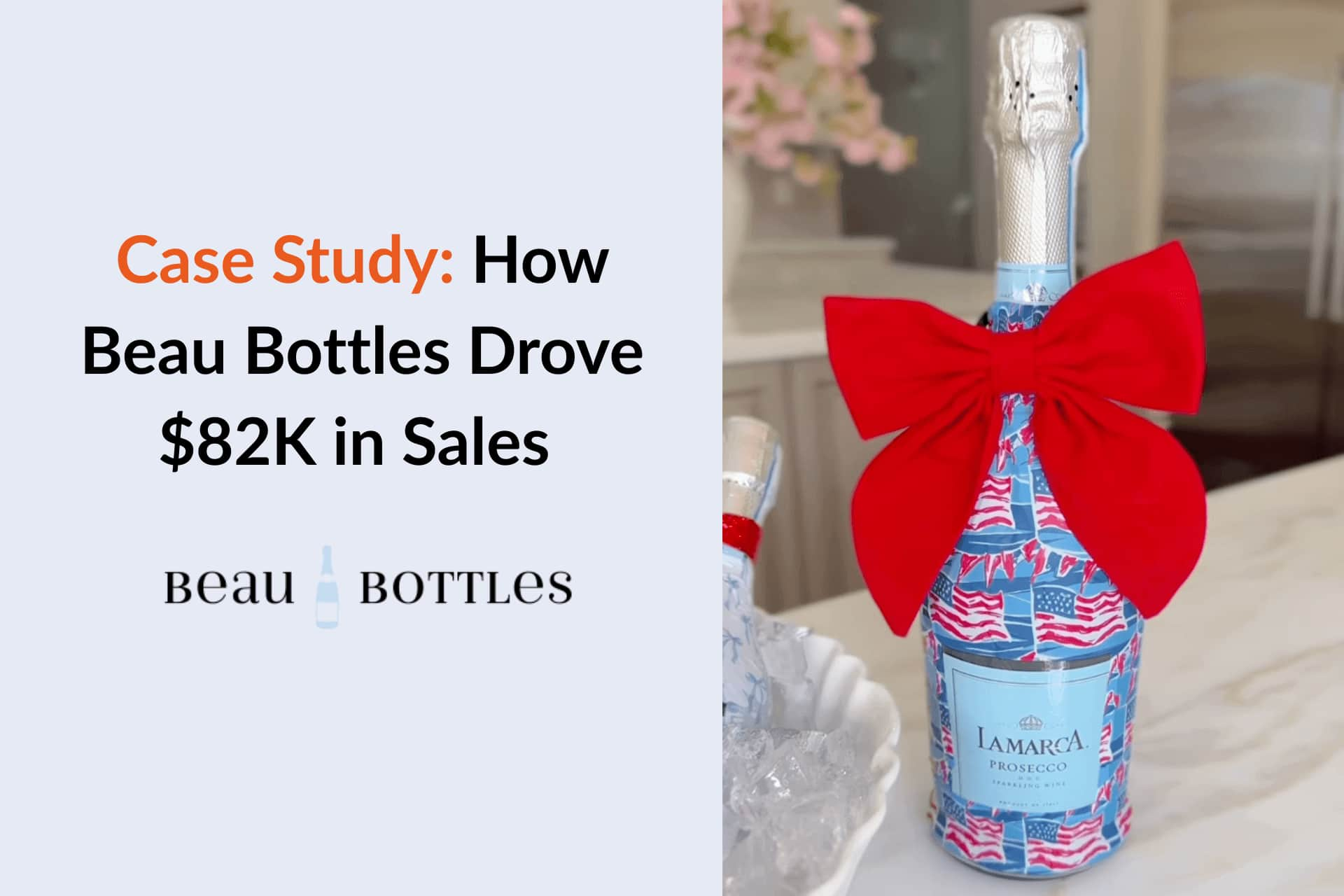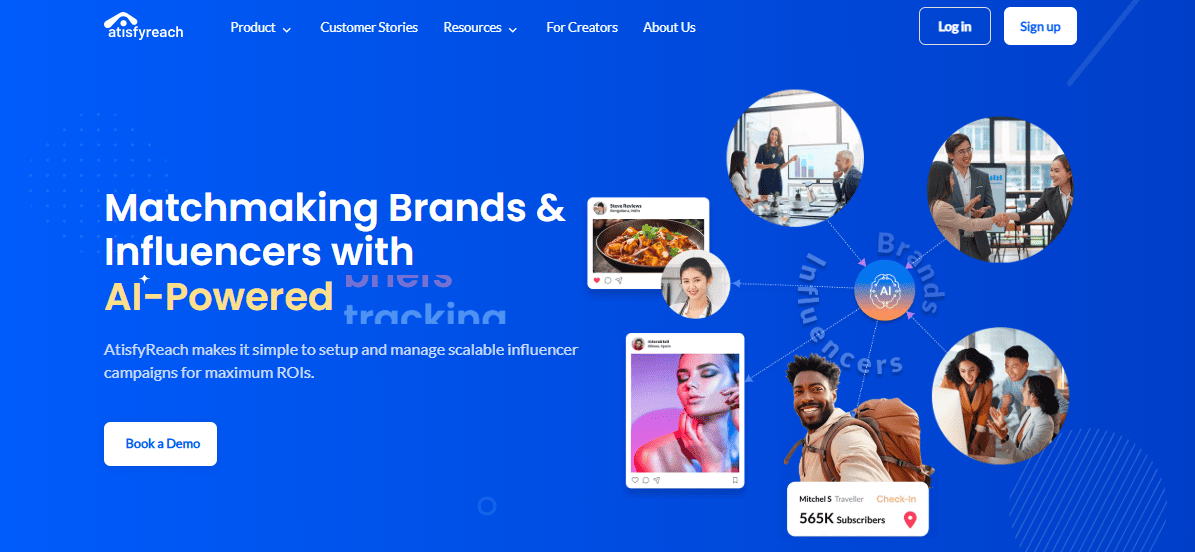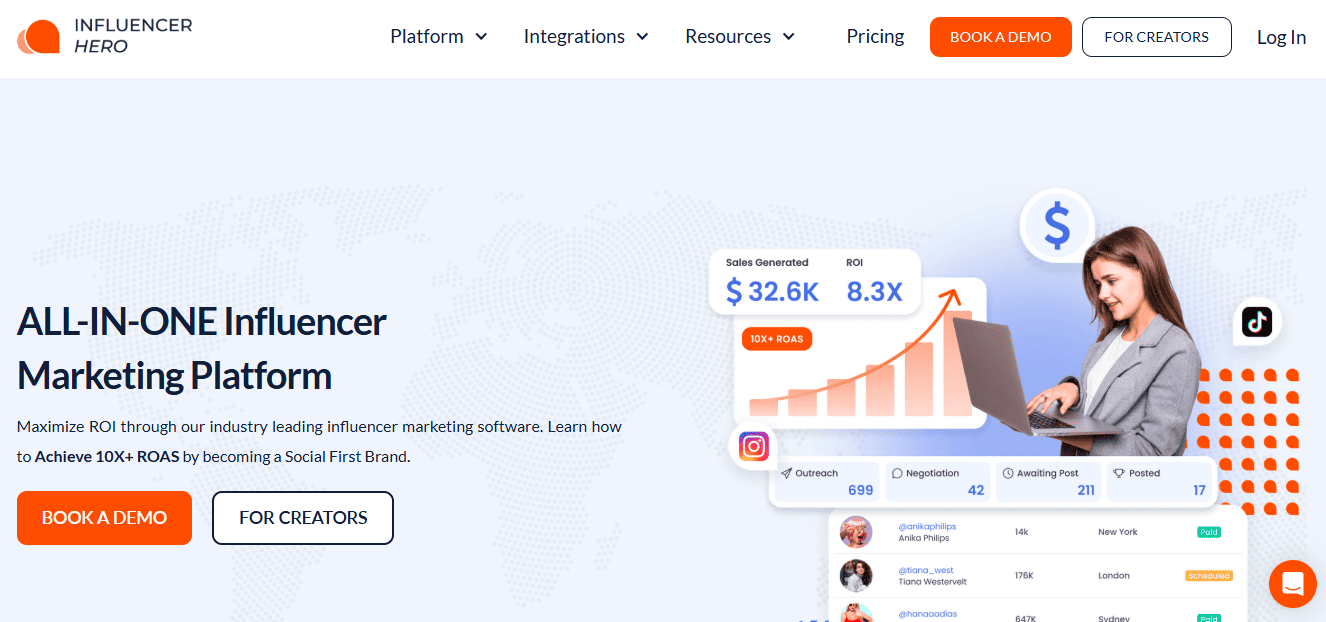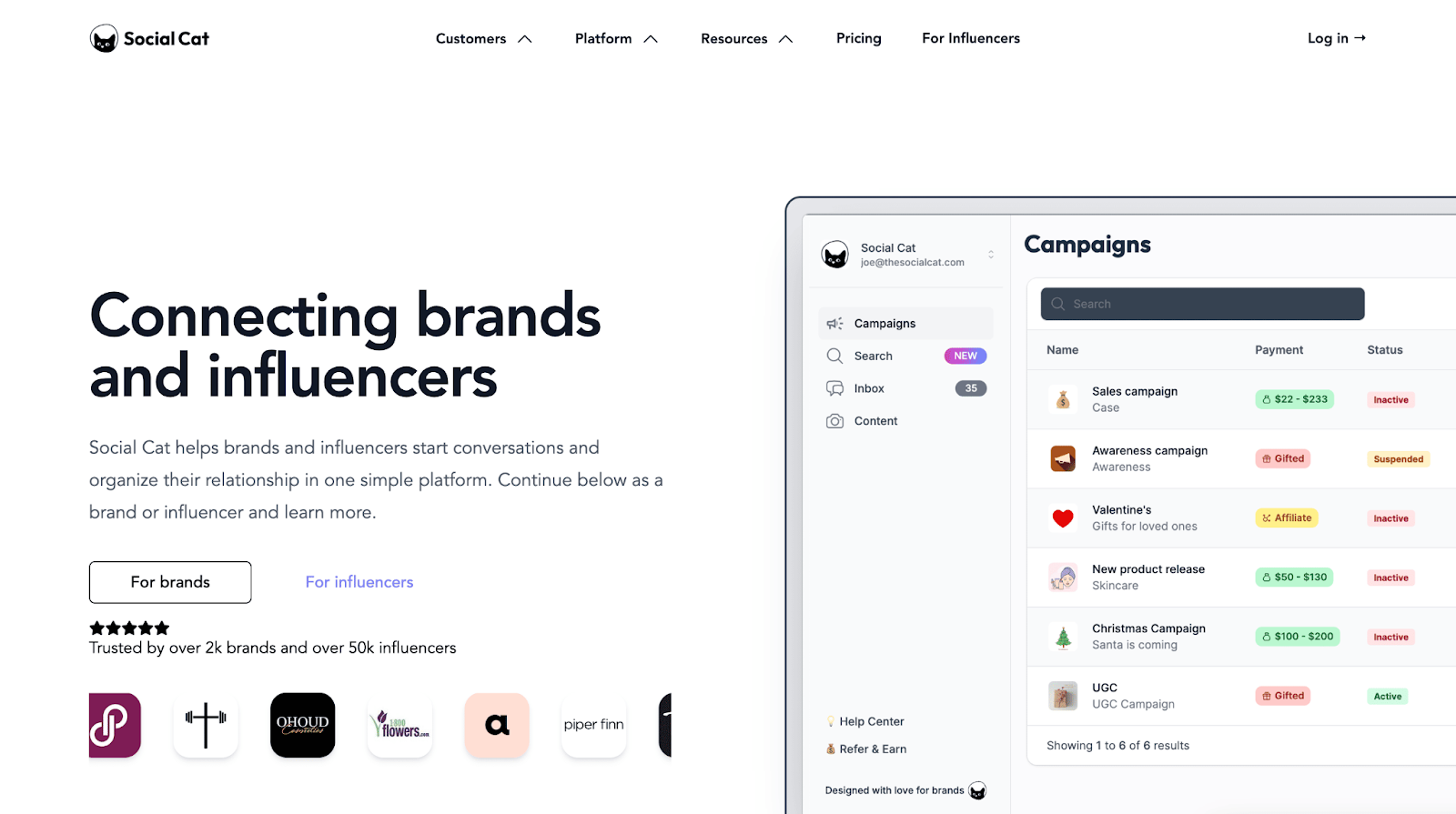





AtisfyReach is an AI-powered influencer marketing platform that assists brands in discovering, managing, and analyzing influencer campaigns. While it offers a range of features, some users have expressed concerns regarding its pricing transparency, user interface, and customer support. These issues have led many to seek alternative platforms that better align with their needs.
In this article, we will explore the top 10 AtisfyReach alternatives, providing detailed insights into their features, pricing, and user experiences to help you make an informed decision.
The top 10 alternatives we will explore in this article are:
These platforms have been selected based on their features, user reviews, and overall performance in the influencer marketing space.
While AtisfyReach offers AI-powered influencer marketing tools, several users have highlighted limitations that may prompt businesses to explore other platforms.
AtisfyReach's official website does not provide detailed pricing information, which can be a concern for potential users seeking clarity on costs. This lack of transparency makes it challenging for businesses to assess the platform's value proposition without direct engagement.
Some users have reported difficulties with AtisfyReach's user interface, citing it as unintuitive and challenging to navigate. These usability concerns can hinder the efficiency of campaign management and may lead to a steeper learning curve for new users.
Feedback indicates that AtisfyReach's customer support may not be as responsive or accessible as desired. Users have highlighted delays in receiving assistance and limited communication options, which can be frustrating when timely support is needed.
Our comparison focuses on several key aspects:

Best For: AtisfyReach is best for brands looking to scale influencer marketing campaigns globally with the help of AI-driven influencer discovery, automated campaign management, and data-backed ROI tracking. It suits eCommerce brands, gaming companies, and lifestyle businesses that want to run multi-platform campaigns efficiently.
Platform Coverage:
Pricing: AtisfyReach offers a free version for influencers to join campaigns at no cost. For brands, the platform does not publicly disclose pricing plans.
Instead, businesses must request a custom quote via the Help Center or Contact Page. This makes their model less transparent compared to competitors, but it ensures tailored pricing depending on campaign size and goals.
Reviews: 4.4 / 5.0 (G2)
Ease of Use (UX/UI): Users highlight AtisfyReach as intuitive and user-friendly, particularly when it comes to influencer matchmaking and campaign setup. The AI-powered features simplify discovery and outreach, which makes it accessible even for small teams. However, some reviews mention that the platform interface can feel less polished and may require a short learning curve.
Customer Support: AtisfyReach provides support mainly through its Help Center and ticket requests. While some customers praise the team’s guidance and helpful documentation, others report delays in response times and limited direct communication options. The lack of a 24/7 or live chat option is noted as a drawback.

Best For: D2C and eCommerce brands that want to scale influencer and affiliate programs with automation, deep multi-platform coverage, and ROI tracking. Ideal for teams prioritizing performance, efficient workflows, and measurable growth.
Platform Coverage:
Pricing: Influencer Hero offers flexible pricing plans to accommodate growing brands. All plans include core features and can scale as the influencer program grows.
Reviews: 5.0 / 5.0 (Capterra)
Ease of Use (UX/UI): Clean, intuitive dashboard with drag-and-drop campaign setup, automated workflows, and ready-to-use email templates—built to save hours per week even for lean teams.
Customer Support: Delivers 24/7 real-human live chat, responsive email support, and a rich Help Center with written + video tutorials. Every plan includes a dedicated account manager from day one, with optional strategy consultations; Pro plans add a private Slack channel for quicker, continuous support.
Atisfyreach emphasizes AI-powered influencer matching, campaign management, and ROI tracking across major social platforms, but brand-side pricing isn’t clearly published; influencers can join free while brands typically need to contact sales for details. This limited pricing transparency, along with mixed notes on usability and support availability, can add friction for teams evaluating cost and setup.
Influencer Hero takes the opposite approach with transparent, scalable plans ($649–$2,490+/month) and clear contact limits, plus coverage across eight platforms. Teams get automation from discovery through payouts, real-time ROI reporting, and hands-on onboarding—making it easier to forecast budget and ramp quickly.
Bottom line: if you want published pricing, multi-platform eCommerce integrations, and premium support from day one, Influencer Hero is the safer, faster path to a measurable ROI, while Atisfyreach may require more upfront discovery to validate fit and cost.

Best For: eCommerce brands—especially on Shopify—and growth teams that need precise influencer discovery, scaled outreach, and affiliate automation across Instagram, TikTok, and YouTube. Ideal for performance-led programs that want gifting, codes, and payouts tightly connected to storefront data.
Platform Coverage:
Pricing: There are different plans and options.
Reviews: 4.7/5 (G2)
Ease of Use (UX/UI): Users highlight a clean, filter-first interface that makes finding niche creators fast without bloated workflows. The end-to-end flow—discovery → outreach → tracking → payouts—feels streamlined and beginner-friendly while still satisfying advanced operators.
Customer Support: Teams report strong onboarding and responsive guidance, with help on campaign setup, list building, and affiliate workflows. The product philosophy focuses on doing a few core things exceptionally well and supporting them rigorously.
AtisfyReach centers on AI-powered matchmaking and end-to-end campaign management, bundling creator sourcing, outreach, and ROI dashboards in a single ecosystem. However, brand-side pricing isn’t publicly listed and typically requires engaging sales, which can slow procurement and make budgeting less predictable for lean teams.
Modash takes a sharper, more specialized path: precision influencer discovery, scaled outreach/CRM, and Shopify-first affiliate workflows (gifting links, discount codes, UTMs, and automated payouts). Its pricing is published and tiered (e.g., Essentials $199/month and Performance $499/month, billed annually), so teams can forecast usage and cost against creator volume with fewer surprises.
Choose AtisfyReach if you want broader, AI-led campaign orchestration and don’t mind sales-led pricing. Choose Modash if you’re an eCommerce brand—especially on Shopify—prioritizing fast, accurate discovery, email-at-scale outreach, and measurable affiliate revenue with clear, published pricing.

Best For: Sprout Social is best for enterprise-level brands and agencies that need end-to-end influencer campaign management with deep analytics, compliance tools, and integrations like Shopify and PayPal. It’s ideal for teams running large-scale campaigns who prioritize reporting, brand safety, and workflow automation over affordability.
Platform Coverage:
Pricing & Commitment: Pricing varies depending on every brand's needs.
Reviews: 4.5 / 5.0 (Capterra)
Ease of Use (UX/UI): Users describe Sprout Social as powerful but complex. The platform offers a wealth of features, from discovery filters to EMV (Earned Media Value) reporting, which can feel overwhelming for beginners. However, once mastered, the dashboards and customizable workflows give teams excellent control and visibility across multiple campaigns.
Customer Support: Customer support is rated highly for responsiveness, with users noting the availability of onboarding, training resources, and dedicated account representatives for enterprise plans. Still, some users feel that resolving highly technical issues can take time, as support funnels through formal channels rather than direct account manager access.
AtisfyReach and Sprout Social serve different audiences within the influencer marketing space. AtisfyReach focuses on affordability and accessibility, offering AI-powered influencer matching and campaign management across Instagram, TikTok, and Facebook. Its pricing is less transparent, with brands needing to request a quote, but it remains a more budget-friendly option for SMBs and mid-market teams.
Sprout Social, by contrast, is positioned as a premium enterprise solution. At $1,599 per user/month (with a 12-month minimum contract), it delivers far deeper analytics, advanced reporting, Shopify/PayPal integrations, and compliance tools like content approvals and brand safety filters.
In short, Sprout Social is best for enterprises managing large, multi-channel campaigns that demand compliance and advanced analytics, while AtisfyReach is better suited for smaller brands wanting a cost-efficient, AI-driven discovery and campaign management tool without the enterprise-level price tag.

Best For: eCommerce brands on Shopify and Amazon that want end-to-end influencer management with true sales attribution, from discovery and outreach to affiliate tracking and bulk payouts.
Platform Coverage:
Pricing:
Reviews: 4.5/5 (G2)
Ease of Use (UX/UI): Upfluence combines discovery, outreach, tracking, and payments in one place, which reduces tool-sprawl but introduces a heavier setup for new teams. The demo highlights strong analytics and ecommerce tie-ins; however, it notes a learning curve for beginners as you configure codes, links, and attribution.
Customer Support: The sales-led, annual contract motion implies guided onboarding for Shopify/Amazon integration and affiliate workflows, even though specific SLAs aren’t detailed in the demo. In practice, teams typically lean on implementation support to connect storefronts, configure tracking, and standardize payouts.
AtisfyReach leans into AI-driven influencer matching and an all-in-one campaign hub with dashboards for pricing, tracking, and compliance (single-contract/legal safeguards). Its pitch is simplicity—match, launch, and monitor at scale across multiple networks. One practical drawback: brand-side pricing isn’t published, so budgeting usually requires a sales conversation to scope costs and usage.
Upfluence takes a performance eCommerce angle, pairing large-scale discovery and AI outreach with Shopify and Amazon integrations to attribute sales directly to creators. Pricing is public and enterprise-leaning—about $1,276/month on annual terms (option to remove the Payments module, −$399), with no commission fees on sales or outreach volume—so finance teams can forecast spend more precisely.
Which to choose? If your priority is AI matchmaking and a broad managed-campaign toolkit—and you’re comfortable engaging sales to confirm pricing—AtisfyReach is a reasonable fit. If you need rigorous storefront-level attribution, bulk payouts, and published pricing, Upfluence is better suited to eCommerce brands that expect to prove and scale ROI quickly.

Best For: Captiv8 is best for large brands and enterprise-level organizations that want advanced influencer discovery, competitive intelligence, and deep performance tracking. With its annual-only pricing and enterprise add-ons, it’s designed for companies with significant influencer marketing budgets rather than SMBs.
Platform Coverage:
Pricing: There are different pricing options:
Reviews: 4.1/5 (G2)
Ease of Use (UX/UI): Users describe Captiv8’s dashboard as robust but complex, offering a wide range of filters, reporting options, and collaboration tools. The platform is praised for its powerful search capabilities and ability to analyze both influencers and competitor activity.
However, because of its breadth, new users report a steep learning curve and the system may feel overwhelming without proper onboarding.
Customer Support: Customer feedback on Captiv8’s support is mixed. While enterprise clients may receive hands-on support during onboarding, many users (both brands and creators) complain of slow or unresponsive customer service, with some reporting unresolved payment issues. This inconsistency in support quality has been noted across community forums like Reddit.
AtisfyReach and Captiv8 serve very different segments of the influencer marketing market. AtisfyReach is an AI-powered platform designed for small to mid-sized brands that want cost-effective campaign management and influencer matching across Instagram, TikTok, and Facebook. Its pricing isn’t publicly disclosed, but it’s positioned as a more accessible option compared to enterprise tools.
Captiv8, on the other hand, is built for enterprises with large influencer budgets. With a $25K annual base, $3K onboarding, and optional $20–30K/month for commerce features, it is significantly more expensive. In exchange, it provides advanced discovery filters, competitive intelligence, collaboration tools, and deep analytics integrations.
In short: choose AtisfyReach if you want affordability and straightforward AI-driven influencer matching. Choose Captiv8 if you are an enterprise needing advanced intelligence, team collaboration, and storefront/affiliate solutions at scale.

Best For: Large enterprises, global brands, and agencies that need a scalable, end-to-end influencer platform with rigorous data accuracy, advanced approvals, and executive-ready reporting. Ideal for teams coordinating multi-market programs and strict compliance.
Platform Coverage:
Pricing: There are different plans:
Reviews: 4.7/5 (G2)
Ease of Use (UX/UI): CreatorIQ streamlines the full lifecycle—discovery, activation, campaign management, and measurement—into configurable workflows (brief builder, one-sheets, content approvals). Teams can tailor dashboards and live reports for stakeholders without extra logins, though the breadth of options can feel “enterprise-heavy” at first.
Customer Support: Accounts include an implementation manager and customer success team that help with onboarding, campaign setup, and quarterly planning. Strong platform partnerships (Meta/TikTok/YouTube) also translate into early access to new features and support grounded in official APIs.
AtisfyReach positions itself as an AI-powered matchmaking and campaign hub focused on simplifying setup, pricing, briefs, and tracking in one place. It emphasizes global reach and a single-contract approach for legal compliance, but brand-side pricing isn’t published—prospects typically have to contact sales to scope costs.
CreatorIQ, by contrast, is an enterprise-grade lifecycle platform anchored by direct API integrations with Meta/TikTok/YouTube for real-time, reliable reporting. It layers CRM, approvals, content rights, Shopify workflows, built-in payments, and shareable live dashboards, backed by implementation and customer success teams. Contracts are annual, and budgets commonly fall in the ~$2K–$5K/month range, making it more suitable for larger teams needing scale and governance.
Which to choose? Pick AtisfyReach if you want AI-driven matching and a simplified campaign toolkit and you’re comfortable engaging sales for pricing clarity. Choose CreatorIQ if you require enterprise-level data fidelity, formal approvals/rights management, and executive-ready analytics with hands-on onboarding—even at a higher, annual-only price point.

Best For: HypeAuditor is best for brands, agencies, and enterprises that prioritize data accuracy, fraud detection, and in-depth influencer analytics across Instagram, TikTok, YouTube, Twitch, X, and Snapchat. It’s particularly valuable for companies running campaigns at scale who need advanced reporting and competitor insights.
Platform Coverage:
Pricing: HypeAuditor’s pricing is customizable, with the standard “Business” plan starting at around $10,000/year. Pricing can be adjusted based on the number of reports, active campaigns, and platform usage. They also offer a 24–48 hour free trial for new users.
Reviews: 4.6/5 (G2)
Ease of Use (UX/UI): Users highlight that HypeAuditor’s interface is feature-rich but can feel overwhelming at first due to the sheer depth of filters and analytics. Once onboarded, most find the dashboard powerful for campaign tracking, discovery, and fraud detection. The learning curve exists, but users say the payoff is strong given the breadth of insights provided.
Customer Support: Customer support receives generally positive feedback, especially for enterprise clients who get dedicated onboarding. Users appreciate the responsive email and account management support, though some note that smaller clients or trial users may not always get the same level of attention.
AtisfyReach is designed for brands that want an AI-driven but simplified approach to influencer marketing. It focuses on matchmaking influencers, managing campaigns, and tracking ROI across Instagram, TikTok, and Facebook, but its pricing is opaque and requires contacting the company.
HypeAuditor, by contrast, is a data-heavy platform with stronger fraud detection, deeper analytics, and broader platform coverage (Instagram, TikTok, YouTube, Twitch, X, Snapchat). Its pricing starts around $10,000/year, making it significantly more expensive, but it provides more advanced search, outreach, and reporting capabilities.
In short: choose AtisfyReach if you need a straightforward, accessible, AI-powered solution with more transparent influencer matchmaking. Choose HypeAuditor if you require deep analytics, fraud detection, and enterprise-level tracking across more platforms—but are prepared for a higher price point.

Best For: DTC and eCommerce brands that want to run end-to-end influencer programs—from product seeding and gifting to affiliate payouts, UGC collection, and ROI tracking—inside one platform with deep commerce integrations.
Platform Coverage:
Pricing:
Reviews: 4.5 / 5.0 (G2)
Ease of Use (UX/UI): Teams like that GRIN centralizes discovery, outreach, gifting, contracts, payments, and analytics in one dashboard, reducing tool-switching. That said, users report occasional glitches, slow loads, and duplicate/irrelevant search results—so while day-to-day workflows are streamlined, reliability can vary.
Customer Support: Many brands appreciate optional program strategists for onboarding and optimization, plus email syncing and creator portals that simplify comms. Reviews note uneven follow-through at times (delays or unresolved tickets), so expectations around response times should be set during procurement.
AtisfyReach emphasizes AI-driven matchmaking, a single-contract approach for compliance, and interactive dashboards for pricing/ROI—positioning itself as a one-stop, simplified campaign hub. Pricing for brands isn’t publicly listed, so budgeting typically requires a sales conversation.
GRIN is purpose-built for product-led brands, tying discovery and CRM to commerce systems and affiliate revenue. Pricing is enterprise-leaning—commonly starting around $25K/year with a 12-month commitment—but you get unlimited creator partnerships, in-app PayPal payouts, automatic media rights, and a robust UGC library that captures Stories as well.
Which to choose? If you want fast AI matching, consolidated contracting, and a simpler entry point (and you’re comfortable confirming price with sales), AtisfyReach is a solid fit. If your priority is measurable eCommerce impact—codes/links tied to revenue, streamlined seeding/fulfillment, and operational control at scale—GRIN better serves performance-driven DTC teams that can justify an annual, higher-budget platform.

Best For: Small businesses, startups, and boutique DTC brands that want an affordable, lightweight stack for influencer discovery, outreach, and CRM—without enterprise contracts or bloat.
Platform Coverage:
Pricing:
Reviews: 4.6/5.0 (G2)
Ease of Use (UX/UI): Users highlight a clean, streamlined interface that consolidates discovery, inbox, and creator CRM in one place. The workflow is intentionally “light,” so teams can stand up campaigns fast; the tradeoff is fewer deep integrations than enterprise tools.
Customer Support: Wednesday.App leans into self-serve simplicity—free entry, easy upgrades, and no long-term commitment—so brands can test quickly. As an SMB-focused product, expectations skew toward responsive in-app/email help rather than dedicated enterprise CSMs.
AtisfyReach aims to be a one-stop, AI-powered campaign hub—spanning matchmaking, pricing intelligence, briefs, and ROI dashboards—with global reach and a single-contract approach to simplify legal compliance. However, brand-side pricing isn’t published; teams usually need to speak with sales to size budgets and access.
Wednesday.App distills the workflow for SMBs: AI discovery, an integrated inbox with ChatGPT help, and a creator CRM you can start using for free, then expand to $79/month (Discovery) or $279/month (Outreach, waitlist)—no long commitments. It trades some enterprise depth for speed, simplicity, and transparent pricing.
Which should you choose? If you need centralized compliance, pricing models, and a broader all-in-one environment—and you’re comfortable engaging sales for pricing—AtisfyReach fits a more “managed” approach. If you’re a lean team prioritizing fast setup, low cost, and AI-assisted prospecting and outreach, Wednesday.App is the pragmatic, budget-friendly pick.

Best For: Small to medium-sized brands that want a beginner-friendly way to run product seeding, UGC, and straightforward influencer collaborations—especially across Instagram and TikTok—without enterprise pricing or complexity.
Platform Coverage:
Pricing:
Reviews: 4.3/5.0 (Trustpilot)Ease of Use (UX/UI): Social Cat emphasizes a clean, simple workflow—create a campaign, invite or accept applicants, ship product, and track deliverables—so new teams can move quickly without a steep learning curve. The dashboard consolidates discovery, messaging, and basic tracking, keeping things lightweight compared to heavier suites.
Customer Support: Support is geared to SMB needs: email as the baseline and priority support on higher tiers. Users highlight the platform’s approachable, hands-on guidance during onboarding, even though it doesn’t offer the layered success resources of enterprise tools.
AtisfyReach positions itself as a one-stop, AI-powered campaign hub with global reach, centralized compliance (single contract), and a data-driven pricing/ROI framework surfaced through interactive dashboards. That breadth suits teams seeking algorithmic matching and an all-in-one operating model; however, brand-side pricing isn’t published and typically requires contacting sales.
Social Cat takes the opposite tack: a deliberately simple stack focused on campaign creation, discovery for Instagram/TikTok, in-app messaging, and product seeding—with content usage rights included. Pricing is fully transparent at $99–$299/month, making it easy for SMBs to budget without sales calls, though it forgoes advanced analytics and deep integrations.
Which should you choose? If you want AI-assisted matchmaking, centralized legal/compliance, and a broader analytics layer—and you’re comfortable with sales-led pricing—AtisfyReach fits a more “managed” approach. If you’re an early-stage or lean DTC team prioritizing quick setup, predictable low costs, and steady UGC via product seeding, Social Cat is the pragmatic, budget-friendly option.
Choosing the right influencer marketing platform depends on your brand’s goals, budget, and need for transparency. While AtisfyReach offers AI-powered discovery and campaign tools, many brands are exploring alternatives that provide clearer pricing, stronger customer support, and more robust integrations. From advanced analytics in HypeAuditor to enterprise-scale solutions like Captiv8 and CreatorIQ, there’s no shortage of platforms ready to fill the gaps.
Among all the options, Influencer Hero stands out as one of the best alternatives, combining an intuitive interface, transparent pricing, and excellent customer support tailored for eCommerce brands. If you’re ready to scale your influencer campaigns with confidence, book a demo with Influencer Hero today and see how it can transform your marketing strategy.

While AtisfyReach provides AI-powered influencer discovery and campaign management, some users report pricing opacity, limited global reach, and less responsive customer support. If you’re looking for more transparency and broader integrations, alternatives like Influencer Hero, Modash, or Upfluence may offer a better fit depending on your brand’s needs.
For eCommerce brands, Influencer Hero is a strong alternative thanks to its Shopify integration, affiliate tracking, and content management tools. Platforms like Grin and Social Cat also cater to eCommerce, but Influencer Hero’s ease of use and customer support make it especially appealing for Shopify and Amazon sellers.
Pricing transparency is one of the biggest concerns with AtisfyReach. Influencer Hero, Modash, and Social Cat are known for offering clear, upfront pricing models, making it easier for brands to plan budgets without hidden costs. On the other hand, enterprise platforms like Captiv8 and Sprout Social require quotes and higher commitments.
If you need in-depth analytics, fraud detection, and competitive insights, HypeAuditor, CreatorIQ, and Sprout Social are excellent options. These platforms provide detailed ROI tracking, EMV (Earned Media Value), audience authenticity scores, and cross-platform analytics—features that go beyond AtisfyReach’s standard reporting.
Customer support is a common complaint among AtisfyReach users. Influencer Hero consistently receives praise for its responsive support team, onboarding assistance, and dedicated account managers. Other alternatives like Upfluence and Grin also provide strong customer support, but Influencer Hero stands out for combining accessibility with a personal touch.



Schedule a Demo with one of our media experts below.